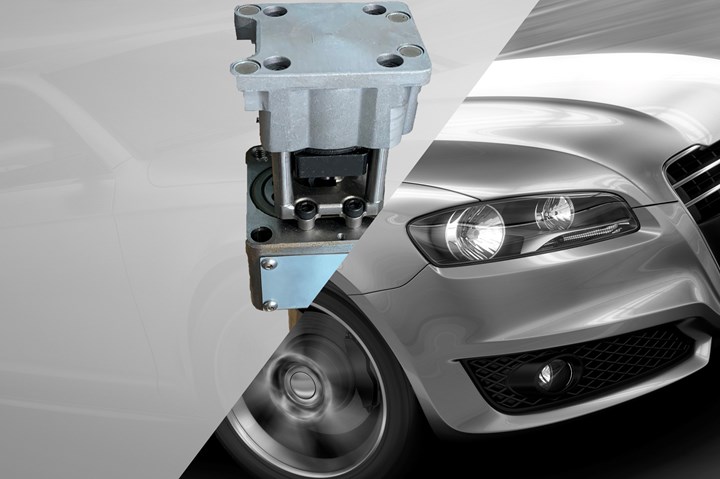Extended Process Window for Non-Cooled Hydraulic Cylinder Supports Temperature-Critical Applications
HRScool Evo, Oerlikon HRSflow’s optimized hydraulic cylinder system, has improved its insulation concept for uniform temperature distribution along the entire hot runner system, without the need for active liquid cooling.
Share
Read Next

Photo Credit: Oerlikon HRSflow
Oerlikon HRSflow presents an additional development of its HRScool hydraulic cylinder system for hot runner injection molding, HRScool Evo, which, as a result of sophisticated temperature management, does not require active liquid cooling of the actuation unit. Further reduction in the heat flow between the hot runner and actuator now enables HRScool Evo to be used at higher mold temperatures than its predecessor system, HRScool, which was presented in 2019.
To achieve this, the company says it has constructively optimized the heat balance of the cylinder. Now, instead of being primarily used to produce interior and exterior automotive parts, HRScool is now also available for temperature-critical applications. HRScool Evo—the basic and the damped versions—easily fits into the mold cutouts of Oerlikon HRSflow’s P, M, G and A series hot runner systems.
Geometry optimization of the contact elements between manifold and cylinder allows HRSCool Evo to reduce the heat transfer from the manifold heaters to the oil of the actuator. Heat dissipation to the cold clamping platen takes place via a cover whose large, flat surface is made of a material with very high thermal conductivity, working as thermal bridge. The company notes that integrated height adaptability ensures maximum efficiency even without accurate seat tolerances.
HRScool Evo enables savings in costs and maintenance, Oerlikon HRSflow adds, because, in addition to ensuring an optimally uniform temperature distribution, the elimination of liquid cooling reduces the number of components. The connection of cooling circuits is equally eliminated, as is the problem of clogged cooling ducts or the degradation of hydraulic fluids. The effort required to install and remove this uncooled system is also reduced; the needles can remain in the nozzle during mounting and dismantling with a special lock.
Related Content
-
Maintaining a Wire EDM Machine
To achieve the ultimate capability and level of productivity from your wire EDM on a consistent, repeatable and reliable basis, regular maintenance is a required task.
-
Fundamentals of Designing the Optimal Cooling System
The right mold components can help improve mold cooling and thereby produce higher-quality parts.
-
Solving Mold Alignment Problems with the Right Alignment Lock
Correct alignment lock selection can reduce maintenance costs and molding downtime, as well as increase part quality over the mold’s entire life.




.jpg;maxWidth=300;quality=90)







